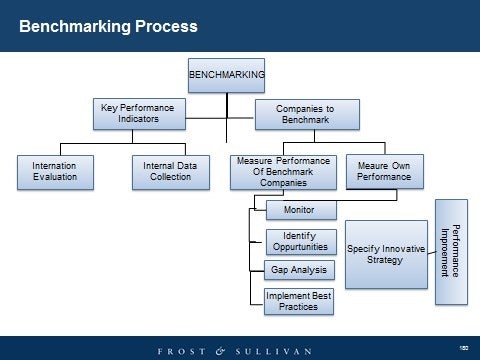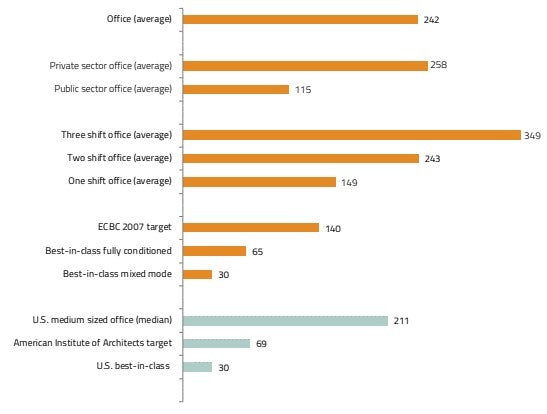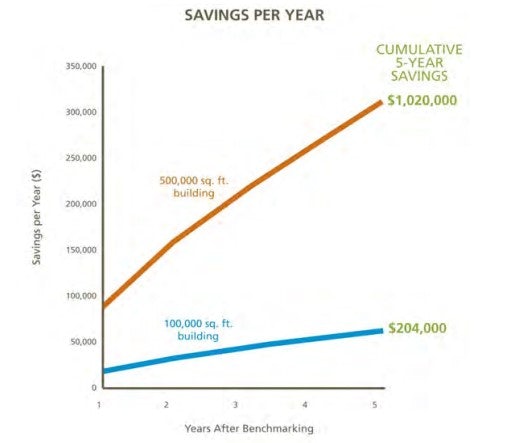
Benchmarking and its importance to ensure better efficiency in facilities
Benchmarking has been a topic of interest and discussion for a long time now. In this blog, we look at what is benchmarking and why it necessary to achieve results. This is part one of our deep-dive into benchmarking. Stay tuned for the next one where we look at how to benchmark for building efficiency!
Energy efficiency has become more important than ever against the background of rising energy costs, the need for efficiency and the importance of fighting climate change. Facility managers worldwide are shifting their focus to how facilities can reduce energy bills and become energy efficient while at same time ensure greater employee experience and comfort. Benchmarking plays a very important role in this as it is the best way to consistently monitor your progress and set goals.
Therefore, as a facility manager, the success of your facility’s operations depend upon how well organizational efficiency and performance improvement are measured and achieved. And this is best achieved through benchmarking.
How does benchmarking work?
The key to effective benchmarking is ‘measuring’. Imagine you are starting a fitness regimen, you take note of your starting weight and regularly monitor the progress on your weighing scale. The same principle applies to benchmarking your facility. The key step is to measure. Unless you are aware of the current performance of your facility, there is not much that you can do to improve it. The benchmarking process requires the evaluation of key performance indicators (KPIs) using which you can compare your performance against competitors or best-in-class facilities.
The Benchmarking Process
Frost & Sullivan describes the benchmarking process using the below graph.

As you can see from the graph, you can divide the process broadly into - the internal performance indicators and the external company that you wish to compare yourself against. One year’s data of internal information such as energy and water usage, floor area, occupancy etc when compared against the performance of benchmark facilities gives facility managers an accurate picture of their facilities’ performance. Once the benchmark is identified, real time analysis of the various variables can lead to an understanding of gaps, trends and insights that will help facility managers improve the performance of the facility.
Continuous Benchmarking and why it is necessary
Benchmarking cannot be a one-time activity as this only captures performance at a particular point in time. As discussed earlier, you have to keep tracking your weight and other fitness goals periodically to really improve. Facilities, like the human body are dynamic and are changing all the time. Continuous benchmarking is a must to achieve true efficiency. Once the goal is determined, a process of continuous quality improvement needs to be followed to really see differences in terms of energy savings or comfort.
Now, to track your fitness goals, you probably have FitBit to keep track of steps, calories burnt and weekly reports etc. Similarly, you'll need to identify and select the best benchmarking tool that provides you with analysis, insights and reports. Identify the set of metrics against which you want to compare your facility with a competitor. A typical graph would look like the sample below, wherein the average EPI for facilities in India is 242 kWh/sq.m.

The above type of graph is easy and useful as you can clearly understand where your building stands against similar ones, including the average/media. If you have multiple facilities to compare with, the benchmarking tool should be able to provide a view for that too.
Why benchmark?
You have a BAS installed in your facility and it seems to be running fine. You also think the energy costs are not too high, so why should you benchmark?
No matter how rudimentary your benchmarking procedure is, you will realise some amount of savings as a result. And this can make a huge difference to your bottom line The figure below shows actual savings for a company and the data is shown over a five-year period. Energy Benchmarking helps facility managers in setting realistic targets and lays out a plan to achieve the target. The process of comparing your facility with other similar facilities can also trigger a bit of constructive competitiveness.

As you can see, considerable savings were achieved through benchmarking for five years. But apart from cost savings, there are other benefits too such as operational efficiency, energy efficiency and most importantly, improved occupant comfort which can lead to performance improvement.
To realise the best results of benchmarking, the process should not stop at just comparing data but also adopting best practices that can be integrated into day to day operations of the facility. When combined with cloud-based solutions like 75F's benchmarking can become easier with your smart BAS providing real time energy reports, analytics and more!
From the above it is also clear that reports and insights play a very important role in improving your facility's performance. Imagine if you could have a team of experts constantly monitoring data and drawing easy to understand and detailed reports and insights for you! 75F offers this as part of our Managed Services package! Calculate your Energy Performance Index with our EPI calculator and we will get back to you with tips advice based on your results!











